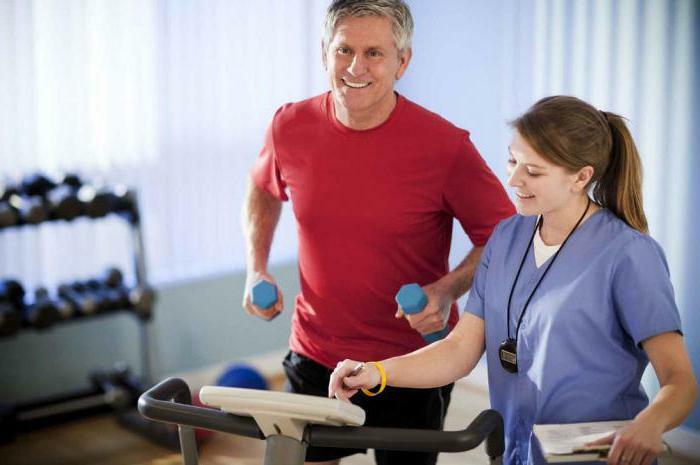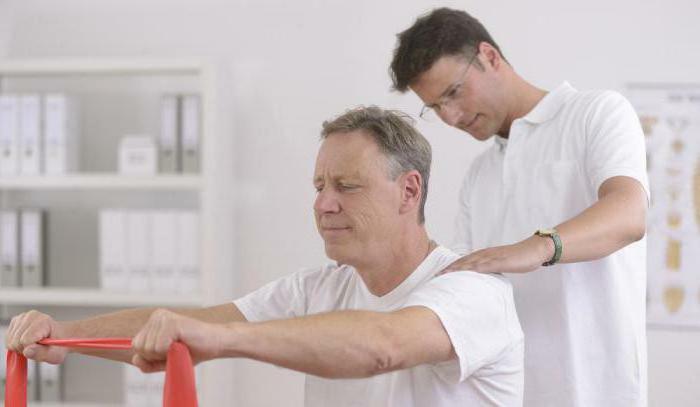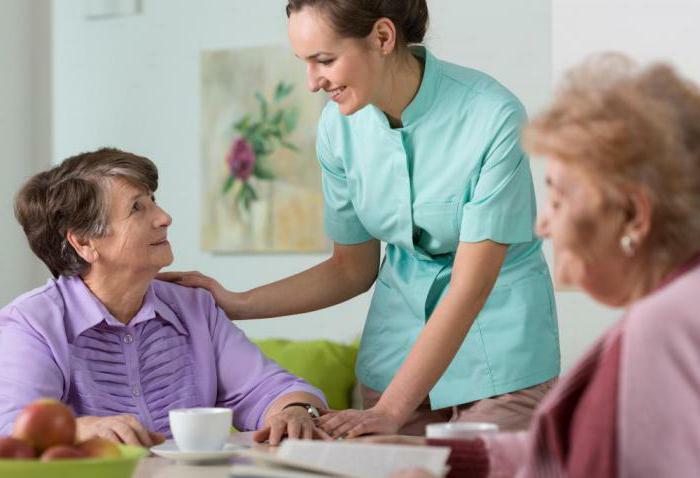Rehabilitation potential and its components
The rehabilitation potential of a disabled person is a characteristic of the biological, energy state of the organism, from which it follows how effectively various organs and systems that are important in the rehabilitation process are functioning. Evaluate from the point of view of both biology, anatomy, and medical science. The concept is complex, has several significant aspects. Let us examine them in more detail.

What are we talking about?
Assessing the rehabilitation potential of the individual, doctors pay attention to the genetic prerequisites and specific constitutional features that determine the capabilities of a particular organism. From them one can draw a conclusion about the hereditary factor and its effect on the state of health. Attention is paid to gender, age characteristics, certain features of the structure and functioning of the body.
Evaluation of rehabilitation potential obliges to analyze the possibilities that the medical department has, including the qualification of the working staff and the availability of equipment, the technical security of the work process. Having investigated these factors, it is possible to conclude reasonably that it will help in a specific case within the biological, medical, rehabilitation aspects. This assessment should be carried out taking into account the specific features of a particular case. It is impossible to derive the standard level applied to all individuals undergoing rehabilitation at the moment.
What else is important?
Psychological rehabilitation potential is a parameter for the identification of which a complete analysis of the particular patient's characteristics should be carried out. At the same time, special attention is paid to mental processes. They check the work of memory and the ability to concentrate attention, reveal the intensity of mental processes, the emotional state and its dynamics. It is equally important when assessing the potential to study the personality characteristics of the patient, to determine what kind of temperament is inherent in him, and on this basis to build communication with the patient. You need to know the nature of the patient, the level of his intellectual development. In many respects the success of rehabilitation is determined by the presence of motivation, which qualified doctors can support and stimulate.
The level of rehabilitation potential is determined by internal modeling of the disease. This term is used to denote the patient's understanding of his condition, his conception of the nature of the problem and possible forecasts for the near and distant future. Depends on the potential and the medical aspects - the specific features of the specific treatment program, including its scope and duration. The higher the quality of medical care, the greater will be the potential of the individual. When predicting the situation, it makes sense to evaluate biological, social aspects, and also pay attention to the level of functioning of compensatory mechanisms. A comprehensive study of the situation allows you to accurately determine the patient's potential and find ways to implement it, and, if necessary, increase.

Inside and outside
Modern scales of rehabilitation potential oblige to pay equal attention both to personal features of a person, to specific features of his body, and to the social environment. At the same time, it is taken into account that the presence of a defect or pathology does not exclude an individual from the social environment, which forms an additional rehabilitation field that is associated with the surrounding and their influence on the person.
The correct definition of the rehabilitation potential requires a comprehensive analysis of the public mood and an assessment of the opinion on the rehabilitation promoted by the community. Consider both the influence of the local local society surrounding the person undergoing rehabilitation, and human society as a whole. Assessing the capabilities of the individual, it is important to comprehensively analyze all the factors influencing the situation for building the most effective program taking into account the individual aspects of the current situation.
Social environment
A full-scale, comprehensive definition of rehabilitation potential obliges to analyze the microscopic society surrounding the individual who undergoes restorative therapy. They talk about the so-called rehabilitation orientation. Attention is paid to the patient's close relatives and the presence of a support group related to common interests, as well as the environment in the workplace, educational, if any, in a person's life.
Identifying the capabilities of a specific person requires that the characteristics of the patient be assessed in comparison with the views of the reference group. This is especially true when the rehabilitation potential and rehabilitation prognosis are formulated with regard to suffering mental, nervous deviations. On the basis of a full-fledged analysis, it is possible to determine the possibility of rehabilitation in a social, labor, professional environment, to analyze the prospects for integration into a certain social group.

What is being said around?
The public opinion influences the human consciousness quite strongly. Doctors, while formulating the rehabilitation potential and rehabilitation prognosis, necessarily take this aspect into account. Often, the individual's ideas about his future opportunities are dictated by established stereotypes, established opinion. If the society approves and accepts the current situation, admits rehabilitation and sympathetically treats people who have successfully passed it, this creates an additional motivation for a particular person.
At the same time, a situation is possible where the public is negative about the disease and the rehabilitation program, denying the probability of the individual returning to his former social status. This significantly reduces the ability of doctors and reduces the motivation of the person, complicates the recovery program. It should be understood that the rehabilitation potential can not be made completely independent of public opinion, but it is possible to take measures to mitigate the negative impact of this factor if for a specific situation the motivation formed by the society is negative. Otherwise, an opposite approach is needed - active handling of postulates, approved by public opinion, for the motivation of the individual.
We estimate: how to approach the task? About the
rules Revealing the rehabilitation potential requires a full evaluation of three aspects of human activities:
- legal;
- economic;
- is ethical.
Legal, social rehabilitation potential is combined into a legal assessment of the possibilities and future of an individual's recovery program. At the same time, the potential is assessed in relation not to a specific person, but the society is analyzed as a single object, an organism. Attention is paid to the extent to which the social, legal, legal norms, instructions, subordinate to the laws and designed to protect the rights of patients, including those who are granted the status of disabled persons, are successfully formulated, applied in practice.

In our country, there are a number of special regulations designed to protect the rights of people suffering from mental disorders, the nervous system. Not all of them really work in practice, and the assessment of the potential should be made taking into account the real state of affairs, rather than the official state, registered in the papers.
Technique and morals
When assessing rehabilitation potential, doctors necessarily pay attention to social opportunities for helping a person undergoing a rehabilitation program. What kinds of support can the community provide? What technology, scientific developments, economic social programs exist to increase the capabilities of a particular person? A versatile analysis of these aspects provides the most accurate representation of the success of the planned recovery course.
Public moral low rehabilitation potential is a situation when the patient does not feel moral support from the outside world. On the contrary, the high provides excellent opportunities for those who are struggling with the approval of the community with their diseases, problems that do not cause social censure.

Actual problem
It so happens that at the present time a rather low level of support for those who are recovering from addictions is being treated for mental disorders. Specialists draw attention to this fact, noting the unacceptability of such "double standards", since in the support of micro-, macrocosmium absolutely all people who are forced to deal with significant difficulties, including within the framework of medical and rehabilitation program, need it.
When assessing the influence of ethical factors, they pay attention to the specifics of the reference group, analyze the society as a single object, revealing the relation of these groups to the activity of the ongoing recovery of a person. It is believed that the adjustment, if possible, of the social situation, as well as the promotion of a more social policy more favorable to people with disabilities, will increase the potential of ongoing rehabilitation programs in the present and future. Unfortunately, the possibilities of doctors today are significantly limited.
Continuing the situation analysis
When it was possible to identify the specific features of a particular situation in the context of the above described aspects, it is necessary to further assess the patient's condition. For this purpose, a special scale is used for four points: high, medium, slightly below average, and lowest. Separately, assessments are presented in relation to a specific situation for the patient as a person, his body( physiological, biological features are analyzed), the community. Summing up the data, the final value is recorded in the patient's card. In the future, it is repulsed by the choice of programs and approaches.
In order to create an optimal recovery project and plan the success of its implementation, in addition to the specified scoring system, it is also necessary to put a clinical, functional diagnosis and formulate the social capabilities of a person, to analyze his future in view of the mental state. Only such an integrated approach with emphasis on all meaningful functions provides a sufficient amount of information for quality work with the patient.
Special case of
For many parents, it is important to know whether an evaluation of the rehabilitation potential of the child is made with some distinctive features regarding adult patients. As experts say, formally the approach is exactly the same as with any other individual. In this case, the rehabilitation program is made taking into account the age of the person, attention is paid to the stage of assessing the possibilities, the strength of motivation in a particular case.

At the same time, with respect to children, a scale with scores on which a person's condition is assessed is also drawn up, and a social attitude is formulated. It is important to remember the unformed mentality in childhood - this imposes certain restrictions, often complicates the situation. More important is the socium of a microscopic scale, that is, the support of close relatives.
Stroke:
features The identification of the potential for victims of this condition is rather complicated, in many respects the success of the rehabilitation program is determined by the experience of the doctor helping the patient to go through it. Neuroplasticity in each individual case has specific features, many adjustments of functions are also unique, therefore one general universal program for the entire list of patients can not be created.
As specialists note, even in a situation where the lesions coincide, the reaction of the organism and the change in the characteristics of vital activity can differ very significantly. This also applies to the size of the affected area of the brain. To determine the possibilities of the rehabilitation program, it is necessary to analyze individual features and identify all the predictors of recovery.
Prognostic factors: lesion focus
Abundance of foci often has a severe impact on a person, but there is no specific precise information on the significance of this factor to this day, as there are not enough technical and scientific tools for correct study of the situation. It is known that small additional foci complicate the rehabilitation program, especially if they have been formed in the brain areas of the motor cortex, the pathways. This mostly relates to the ipsilateral hemisphere.
Difficulties in rehabilitation will be experienced by patients whose stroke showed extensive damage to one part of the brain and was accompanied by minor lesions of the frontal, temporal, parietal lobes of the hemisphere on the right. At the moment of diagnosing the situation, it is possible to notice this by apathetic patient, hypokinesia, aspontaneity.

What else is affecting?
A specific approach to building a rehabilitation program is required if the stroke was accompanied by the symptomatology of dyscirculatory encephalopathy. This applies to both typical clinical manifestations and neuroimaging signs. Deterioration of the recovery prognosis is associated with symptoms of hypnosis. In some patients there is a decrease in intelligence, ability to work, to concentrate attention. This also worsens the prognosis for rehabilitation.
Recovering after a stroke ability to properly speak can significantly hamper the presence of additional lesions in the areas of the brain responsible for speech. Complicate the situation of the defeat of the dominant hemisphere in the field of formations under the cortical layer, as well as the areas located near those responsible for speech.
